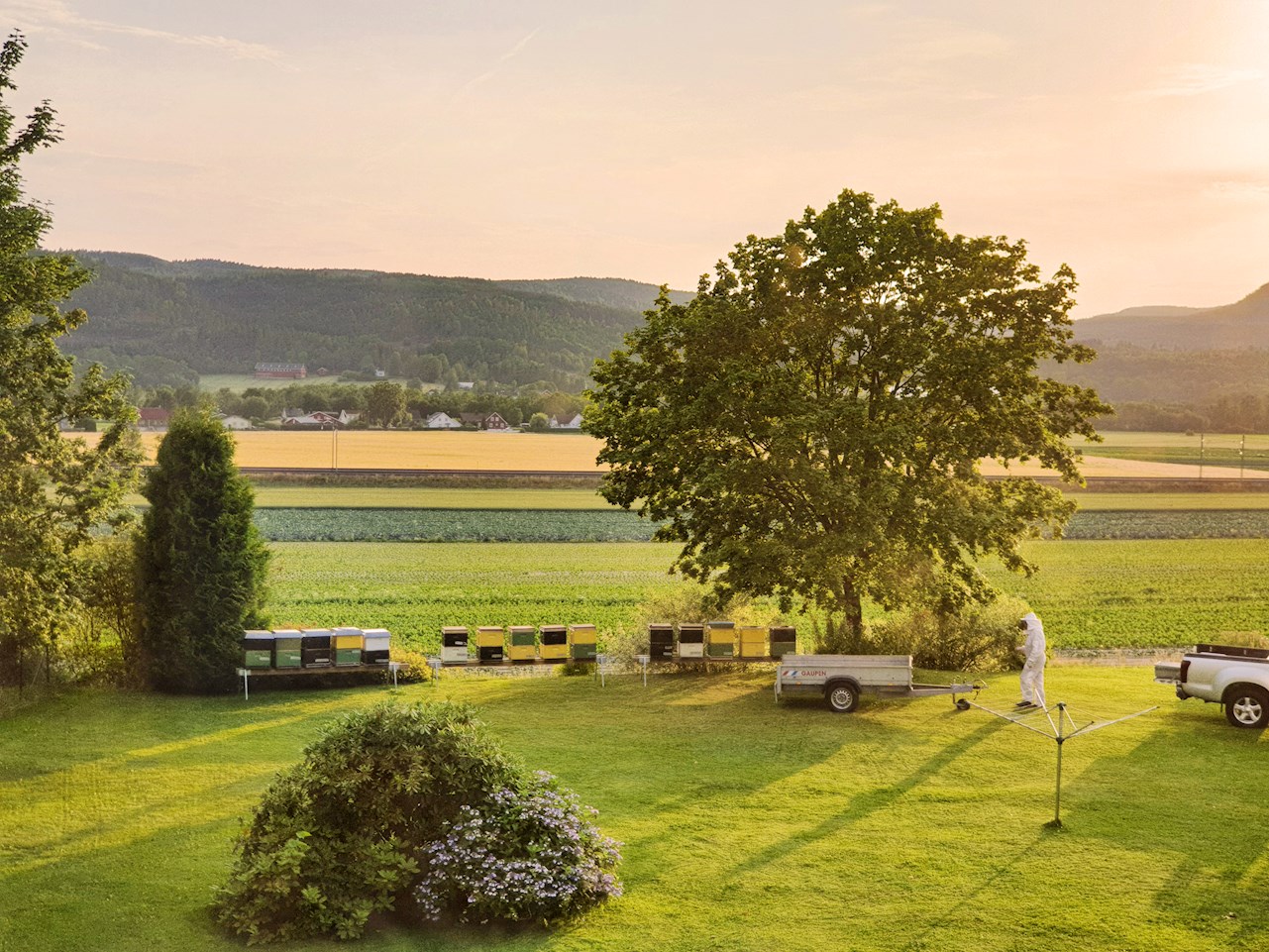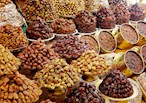On a dull afternoon a few months ago, the thought struck me: what if I could taste the best craft beer in the world? Of course, “best” is subjective, but as a lover of both drinking and rankings, such ideas often occupy my mind.
Untappd is an online beer bible. Before ordering a beer, I always check its Untappd rating. The app is known for its discerning audience, similar to IMDb for movies before the internet became accessible to everyone.
Untappd users are rarely impressed by anything, and beers with 4.0+ rating rarely have an ABV below 10%. They do love meads though.
On the top of Untappd’s list of best brewers (there are around 18,000 breweries in the world), there are two American mead producers, followed by a Norwegian mead producer, and then another American one. It turns out that the four top brewers on Untappd don’t actually make beer, at least not as their main product.
What is mead anyway? Why do beer lovers love it so much? Why haven’t I tried it before? Do I need to drink more? Various questions started to gnaw at me.
The Norwegian one is called Marlobobo, and that’s the one that caught my attention this time.
I Googled: Marlobobo.
Nestled amidst the picturesque landscapes of Sande, Norway, lies Marlobobo Meadery. Established in 2020, this passionate producer has quickly carved its niche with over 100 meads, each crafted with a touch of local magic. They proudly incorporate local berries, spices, and botanicals, infusing their meads with a distinct Norwegian flair.
Google had me hooked. I contacted them and said: I’ve saved up some money, I want to buy all the beers and meads you make, why don’t you have a webshop? They replied that due to Norwegian laws they are not allowed to sell alcohol directly, but that their drinks can be bought through a Dutch webshop.
Norway, Netherlands, same difference. I ordered, it arrived, it was great.
I contacted them again and said hey this is great, why doesn’t anyone know about you except for the countless Untappd users? You need to share your story with the world. Marius Loktu, Marlobobo’s Beverage Creator and Co-owner, agreed.
 Marius Loktu, Cofou Credits: IG: @discobeery
Marius Loktu, Cofou Credits: IG: @discobeery
How did you start all of this?
It all started with home-brewing together with Geir, my business partner. We started that journey in 2014, making everything, but focusing on all the exciting fruit we had available from our local area. First in mixed-fermentation and spontaneously fermented beer, and then we quickly discovered mead and started making that. Over time it became more mead than beer.
During this time of home-brewing I first worked at Vinmonopolet, our state-owned liquor stores. And did a bachelor- and master degree in Food Science, writing my bachelor thesis about shelf stability of mead and my master thesis about oxidation in New-England IPAs.
In the summer of 2019 we bought 500 kg of honey from local beekeepers and close to one tonne of various local berries of the highest quality, before we even had a production location or a license to produce. Right before the end of the decade, our commercial license was acquired and we started our mead production right after in a tiny 20 square meter location.
Our first products were ready for sales just when covid-19 hit Norway, so we had to pivot a bit in terms of sales and getting our name out there, as all bars were forced to shut down for a while. Luckily people embraced us starting to release our products through Vinmonopolet right of the bat. Since then we have tried to keep up as good as we can, while gradually increasing production and the quality of the products.
How did you come up with the idea to do this and what was the reaction of your community?
I was inspired after being introduced to some really good meads from US producers, and started playing around making them as a home meadmaker for several years. Being surrounded by some of the best fruit Norway has to offer, it felt like the perfect category to showcase all the hard labor the fruit farmers around us put into growing such delicacies.
We are located in a quite small village (2500 people) and there are only 10 000 people in our municipality. So we actually got recognition from audiences in the bigger Norwegian cities and abroad first. But now our community is excited that they have their own beverage producer in town. Farmers and beekeepers have been supportive from the start, but hesitant if we were able to pull it off. Now they are over the moon!
On Untappd, there are tens of thousands of beer and mead producers. You are at the very top of the list, number one in Europe. How do you explain such enthusiasm, especially from the typically very harsh and critical reviewers on Untappd?
The feedback from the start has been overwhelming! I think our choice of focusing on fresh, local fruit and honey, while making very concentrated, yet balanced meads resonated with the consumers and what they were looking for. Both in terms of flavor and to support the craftsmanship behind it.
We make a lot of meads with one fruit variety which gives it a sense of place and terroir, but also crazy stuff like cryo-concentrated fruit bombs, barrel-aged meads and flavor combinations inspired by desserts and cocktails.
 Credits: Marlobobo
Credits: Marlobobo
On the other end of the scale we make pure honey iterations (traditionals) where we showcase honey varietals or specific barrels. All in all, a big variety of products. We spend A LOT of time sourcing good fruit, which I feel comes through in the final products.
For your business model, how crucial is this success on Untappd? And does it even make sense to have mead and beer producers on the same ranking list?
Quite important, at least in the beginning, as we don't have many means of communicating about our brand due to the shackles of Norwegian alcohol regulations. Thanks to the recognition, we got quite a lot of international interest very early on, which means export opportunities and festival invitations. It would have probably mattered even more if we were able to do direct sales to consumers.
I think meads have become a natural part of Untappd, as craft beer drinkers were the first ones to embrace modern mead, which again was inspired by modern craft beer. Where the focus is on good ingredients, no shortcuts, bold flavors and creative flavor combinations.
I am not sure splitting the ranking list would solve everything, as also a lot of beer styles are rated quite differently. The same goes for mead styles. Traditionals and braggots are usually rated lower than melomels. Imperial stouts, barley wines, sour beers and higher abv NEIPAs tend to always be rated better than saisons and lagers, for example.
 Credits: Marlobobo
Credits: Marlobobo
I think the reason for that is a combination of factors like concentration of flavor, and how much the product stands out compared to what's considered normal or average. As well as availability of the product. A lot of high-rated meaderies and breweries have memberships or on-site sales only and don't distribute (we only distribute, however. As we are not allowed to follow the other business models). In a perfect world a great saison or lager would be rated high as well. It should!
What exactly is mead, and how do you make it? What sets you apart from other producers?
Mead is a beverage category where the main source of fermentable sugar comes from honey. In wine the fermentable sugars come from wine grapes, in beer it comes from malt, and in cider it comes from apples. Our way of making mead is very similar to wine production, both in terms of equipment and production practices. Instead of using grapes, we use fruit. And then we add honey throughout the fermentation process. What sets us apart from most producers is that we rarely use water in our meads, we only use fruit and honey. And that we almost exclusively use local ingredients harvested during summer. That's also why our products are vintage-based.
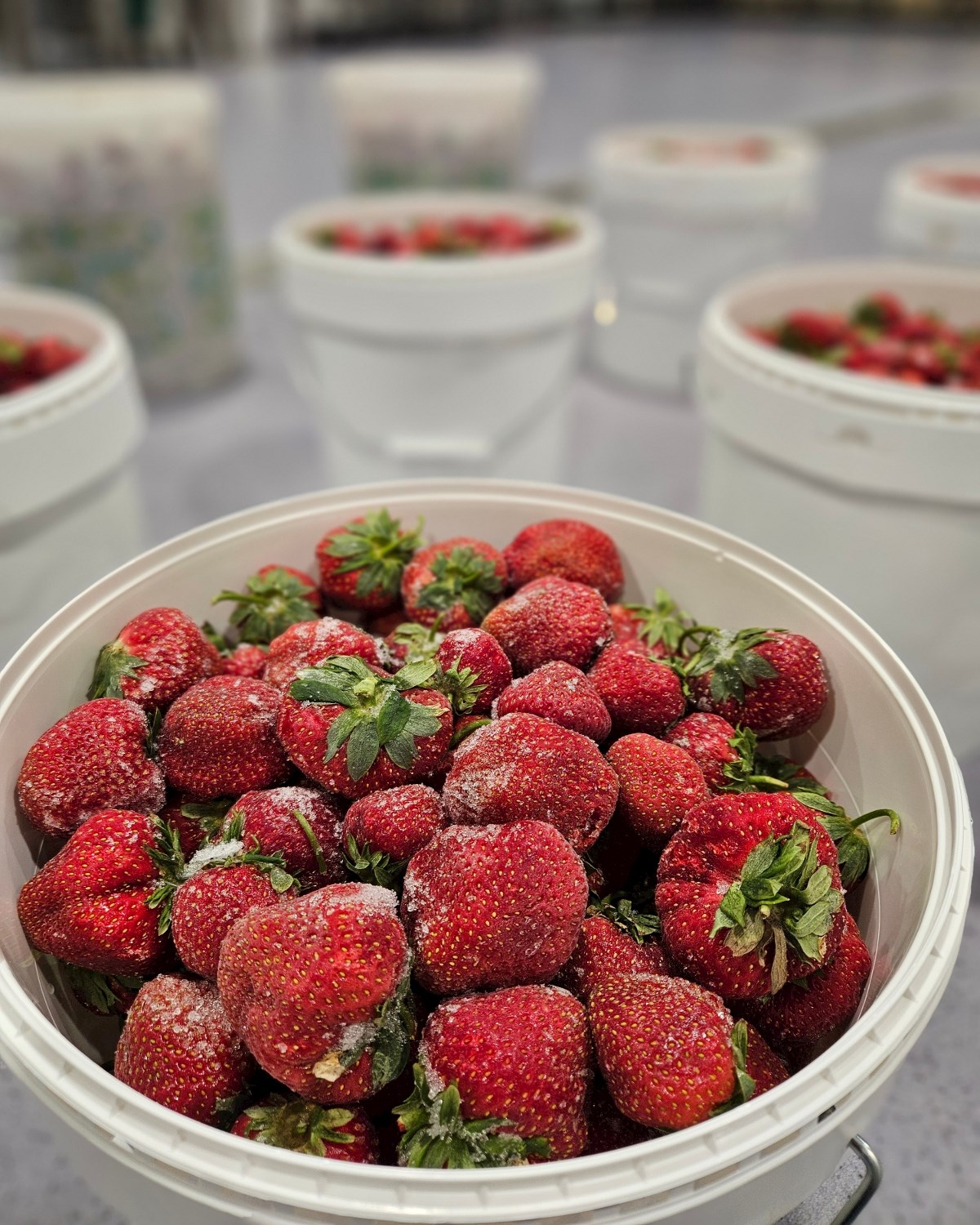 Credits: Marlobobo
Credits: Marlobobo
Many other producers make mead with honey and water as the main ingredients, and then a percentage of fruit or other flavoring ingredients would be added after fermentation. We also experiment with a lot of different vinification methods like spontaneous fermentations and carbonic maceration, methods utilized a lot in the wine industry, but not something I've seen in the mead industry from others.
 Credits: Marlobobo
Credits: Marlobobo
Making waterless meads is a much more expensive process, both in terms of ingredients and labor, but we think the final product speaks for itself. You get another dimension of concentration and complexity, and products that you can age for a long time in the cellar. The bottles can also be enjoyed for 1-2 weeks after being opened without significant changes in flavor (and often longer), as long as they are kept refrigerated and closed (with an intact cork, vacuum stopper, Coravin etc.). Making them great for bottle pours.
How complicated is it to produce mead?
As the mead industry is still young, it can be difficult for new home meadmakers or producers to find good, reliable information on how to produce mead (compared to beer, cider and wine). Making mead itself can be pretty easy, as you could make a mead of water and honey, then add a percentage of fruit at the end.
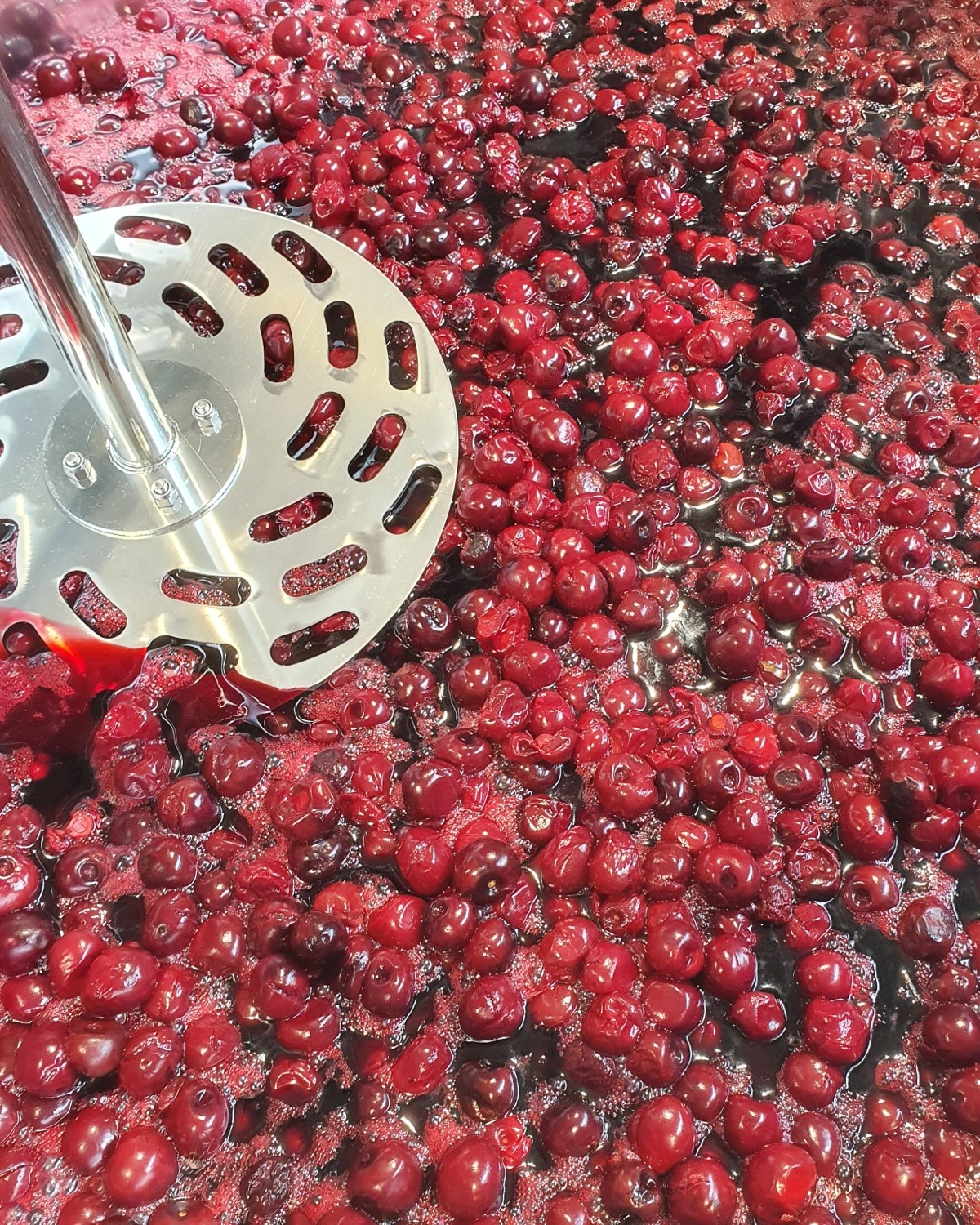 Credits: Marlobobo
Credits: Marlobobo
But everything gets more complicated if you want to make waterless meads. Meads need more nurturing than beer during fermentation as honey doesn't contain a lot of nutrients that yeast needs to perform a healthy fermentation.
How do you explain that this type of drink is not yet a global hit, in countries with excellent honey (like Greece), it's practically non-existent.
I have wondered that myself. But the category is growing every year and converting more and more people. I think it has to do with people not knowing what mead really is and what wide array of styles it holds. Many think it's a historical beer style, or have tasted a bad example at a Renaissance fair or similar, and think it's not for their liking. But I've found most to be converted when they taste a good example and when they are informed what they are drinking (many expect a carbonated beer or something sickly sweet, because that's what they have been served in the past). I was once converted myself, but I was lucky that my three good examples after first trying some bad ones, were Superstition Meadery, B. Nektar and Schramm's Mead, which are all superb.
In Norway many say they don't like Riesling, because they have only tasted the cheap, overly sweet ones that lack acid balance. It's a bit like that.
Real honey is also an expensive source of fermentable sugar. So the starting price point of a mead fermented from real honey will always be higher than a beer for example, as malt is cheap in comparison. I say real honey, as honey has a problem with large-scale adulteration worldwide, being cut with cheap rice or sugar syrup. So highly recommend people to support their local beekeepers or trusted suppliers.
Greece already has a honey-based liqueur called Rakomelo, but I think there should be space for a fermented honey beverage like mead as well. Maybe we should make a second location in Greece. I'd love to work with thyme honey!
When you pair honey and fruit, do you pay attention to the type of honey? Or do you use the same kind of honey for everything?
We do pay attention to the honey, although in our melomels the fruit is in the foreground. In Norway, beekeepers usually only offer wildflower honey or heather honey, but there are still big differences in the flavor between where and when the honey has been sourced. We use wildflower honey for most of our products, but will pair a bright, floral honey with light fruits like plums, and maybe a later harvested wildflower honey that has more caramel and malty notes with wild blueberries for example.
 Credits: Marlobobo
Credits: Marlobobo
We also work with a beekeeper that places his beehives at the locations we get our fruit from, just when they are about to bloom, harvesting varietal honey from nectar the bees have gathered from mainly one source. Cherry blossom honey for example. We just did a series of meads showcasing varietal honey called "Punny Pollination", to show everyone the flavor differences honey makes in a mead.
Which of your flavors are your favorites and which are most popular with the audience?
I love working with cherries, and our different cherry meads are probably some of our most popular products as well. We are most known for working with the very special Stevns(bær) cherry variety, often referred to as "the Nordic grape" due to its complex flavor.
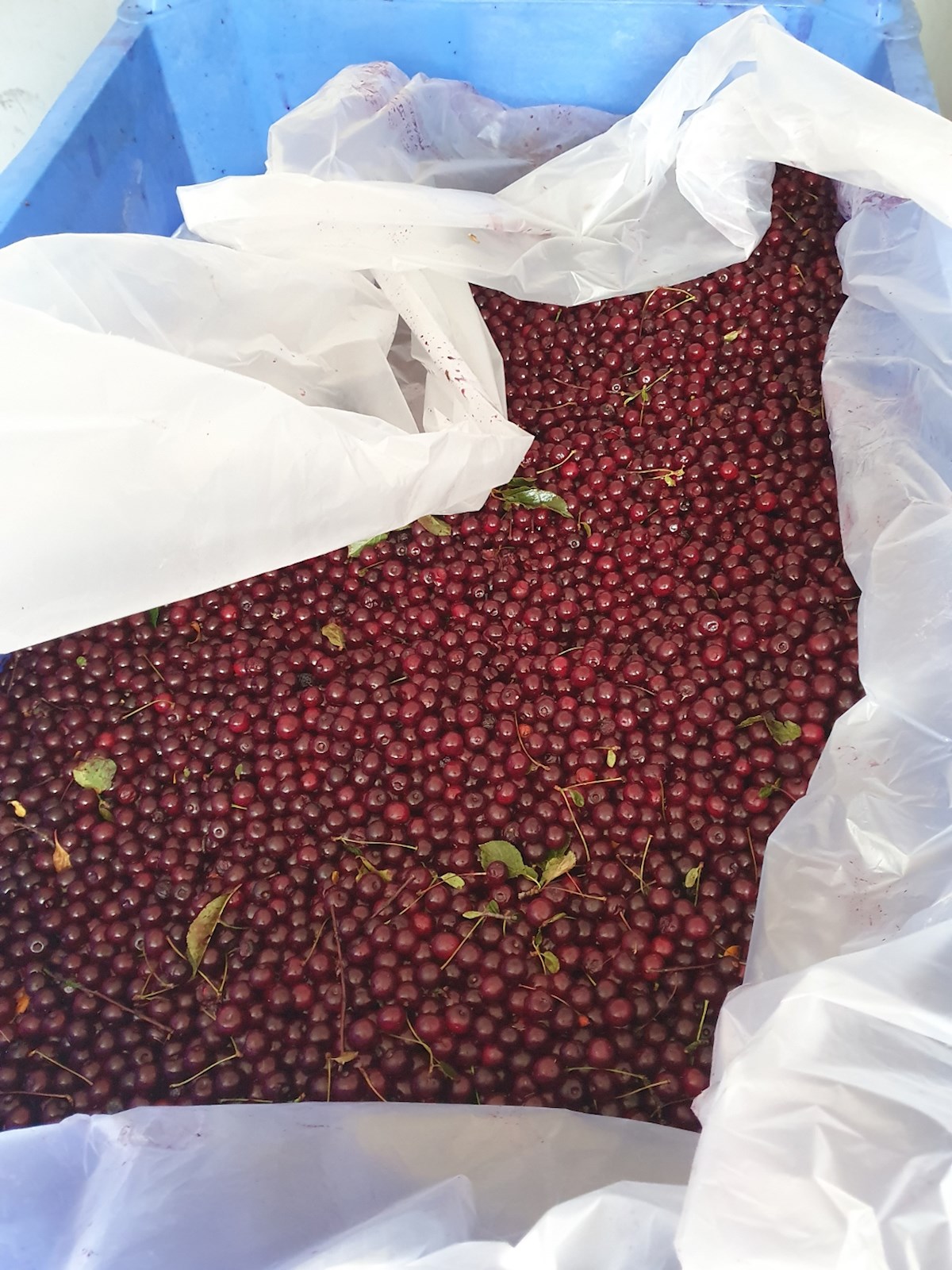 Credits: Marlobobo
Credits: Marlobobo
They are sourced at an orchard 15 minutes away from us by some incredible farmers. But we also work with other cherry varieties. We also have a series of meads called CRYO that is very popular, where we freeze-concentrate the fruit. In other words removing water from the fruit, which increases the concentration even more.
What can your meads be paired with? What is the idea, when is it drunk? Considering its sweetness, is it a dessert drink?
Our main style of meads pairs great with various desserts, cheeses, dark chocolate etc. They have a considerable amount of sweetness, but are always balanced out by acidity. Mead can be sweet, semi-sweet or bone dry, without or with carbonation. So it's quite a versatile drink to pair with. A semi-sweet ginger mead, or one based on apples or plums, can be the perfect pairing for sushi, for example. Semi-sweet to sweet meads can also be a great pairing for dishes containing a lot of acidity, spice or heat, where some wines can be difficult to pair as they lack the sweetness to deal with certain ingredients.
 Credits: @ladybroown - Location: Elephant Castle (Suwon, South-Korea)
Credits: @ladybroown - Location: Elephant Castle (Suwon, South-Korea)
They are also great to drink alone, to savor all the changes and nuances that occur by letting it sit in the glass and breathe for a while. Or to split between friends or bring to dinner parties to introduce people to a beverage category they may have not tried.
Why are meads so expensive? Some of your small bottles cost as much as very expensive wines.
Honey is a very expensive raw material to begin with. Utilizing high quality, Norwegian honey makes it even more expensive. Making meads without any water added, means substantially higher raw material costs from both fruit and honey. The higher the fruit concentration you use, the more honey you need to use to balance out the acidity of the fruit. It's also important for us that the farmers and beekeepers get paid well for their hard work, and we use a lot of time sourcing the best fruit we can.
By working with imported ingredients from low-cost countries we could definitely hit a lower price point and easier produce bigger batches. But we want to support our local community and showcase all the great, fresh ingredients we have available, as it makes a huge difference on the flavor of the final product.
As an example, to make a finished 375 ml bottle of cherry mead we often use 600 g cherries and 250-300 g of honey. Compared to beer, the ingredients of the mead alone cost 6-8x more than the ingredients of a typical heavily fruited sour beer of the same volume.
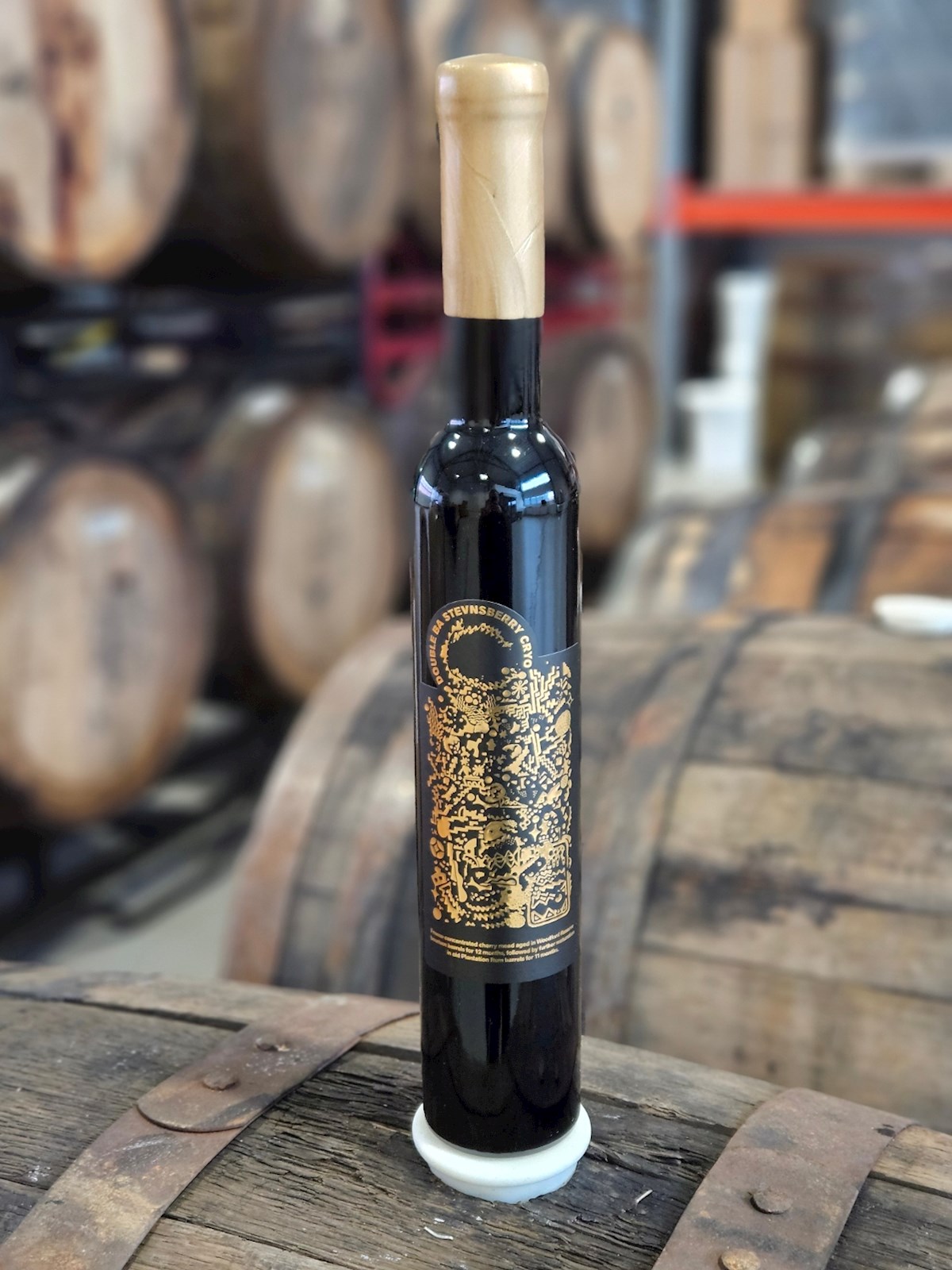 Credits: Marlobobo
Credits: Marlobobo
Compared to high-end dessert wines, meads are actually pretty reasonably priced. Another thing is that even quite expensive wine will often be made in quantities of 10 000 - 100 000+ bottles per year. I think Dom Perignon champagne is like 5 million 750 ml bottles each year. Our small batch production is everything between 50-750 bottles per product. Mostly around 500 bottles per product. Which takes a lot of labor per bottle. Our production and packaging is also very manual due to our size and type of production.
Also, you make beer. Megabear. And you do it brilliantly. Tell us something about that, and what is your priority for the future, mead or beer?
Thank you! Mead will always be our priority as long as people keep buying it. But we love to make beer as well, so Megabear is a fun side project for us. We also interchange some barrels between our mead and barrel-aged beer production. It's cool to be able to do barrel aged barley wines where portions of it have aged in barrels that previously held our meads. It adds another dimension to the beer blends. Same goes for the barrel-aged meads (where we have aged a couple in barrels previously used to age imperial stouts).
 Credits: Marlobobo
Credits: Marlobobo
We also have a second side project called MicroBubbles, where we produce cider and other bubbly creations. We have a series called Circularity where we utilize "retired" fruit from our mead production that normally would have been just thrown away / treated as food waste by following a linear economic model (take, make and dispose). But we use so much fruit in our meads, that the spent fruit will still transfer a ton of fruit flavor and some flavor of honey over to the ciders.
What is it like to be an alcoholic beverage producer in Norway?
Can't complain! We are blessed with great ingredients for mead production and we have a lot of people that have embraced our products, both craft beer drinkers and wine drinkers. But as someone doing a niche style of meads, in a niche category of beverages, it would be very helpful for our business to do direct sales and have a membership to accommodate our fans, but Norwegian alcohol laws make it difficult.
It's also difficult to export to more than ten countries when our government prevents us from sharing product information on social media, when at the same time they make a big deal politically out of facilitating the export of Norwegian products. A peculiar thing to enforce as social media doesn't abide by national borders. It's not like a Norwegian alcohol producer will expose our population to more information about alcohol than foreign alcohol producers.
Do you think that Norway's strict alcohol sales regulations are beneficial? Do they contribute to fewer young people drinking and generally less alcoholism?Your meads and beers cannot be bought directly from you because Norwegian law prohibits it. Where can people buy them?
I do think the regulations for sales and "advertising" are outdated. It's made to prevent pure advertisement of alcohol for people not seeking it out themselves (which is good). But it just gets weird when wine or craft beer bars are not allowed to keep empty bottles of wine/beer on display for bureaucratic reasons. Or to have an old painting on the wall that shows a glass that may contain alcohol. Then it just gets silly, and it seems like all common sense is left out of decisions.
There is no real distinction between advertisement and information. And it's not really working, because we still have a drinking culture where people drink to get blind drunk on low quality products during the weekends. I think if small producers were able to just share what they are doing and what they are making, more and more people would gradually choose quality over quantity when they are first turning to alcohol. Yes, people still may get intoxicated and drunk. But at least that won't be the sole goal of drinking. That would be the flavor experience. Drink less, drink better.
I do, however, think our government-owned alcoholic beverage retailer "Vinmonopolet" works pretty well. You don't need to live in a big city to have a good selection. Anywhere in Norway you can order from the huge selection they stock (over 36 000 products at the moment) without any shipping cost for the consumer as long as it's picked up at their local store. And they have a very fair markup. It's the alcohol and packaging tax that primarily makes alcohol expensive in Norway, as well as higher labor costs in each supply chain compared to many other countries.
In Norway our products can currently be bought at Vinmonopolet, craft beer bars and restaurants.
TASTEATLAS QUESTIONNAIRE
What are your favorite meads and beers in the world, excluding Marlobobo?
There are so many, but I am a big fan of Schramm's Mead and the way they work. Their loganberry mead "Amelia" is probably my favorite of the ones I've had the pleasure of trying. I also think Standard Meadery does amazing stuff, especially their barrel-aged traditionals and fruited session meads (especially the Symbiosis series).
Beer - I am a sucker for classics like Orval, Brasserie Dupont Avec Les Bons Væux and everything lambic (especially Cantillon, 3 Fonteinen, Bokke and Girardin). Mixed fermentation and spontaneously fermented beers from De Garde, Crossover Blendery and SYMBIOSE. IPAs from Deya, Omnipollo and Verdant, and lagers from Buddelship Brauerei. Barrel-aged dark beers from Phase Three Brewing, Revolution Brewing Company, Omnipollo, Moksa Brewing Company and 3 Sons Brewing Co.
I also want to mention the mindblowing great cider from Torn Plant, located in the UK.
What are 3 dishes or ingredients people must try in Norway?
What are your 3 favorite Norwegian food products?
It should be mandatory to try Norwegian rice pudding with Stevns cherry sauce! And to go on a hike to pick wild blueberries (bilberries) and eat them straight from the bush until your tongue is all blue.
Ribbe (christmas pork ribs) is a holiday dish I would recommend if you're visiting during Christmas time, and ingredients like scallops and skrei are of such good quality when fresh.
I think the gins of Norway has become really great! My favorites are probably Nine Sisters Ocean Gin and Bivrost Arctic Gin from Aurora Spirits. And Oslo Håndverksdestilleri makes both great aquavit, gin and vodka, which I always keep in the cupboard. Salikatt is killing it with IPAs, and Lindheim Ølkompani makes the best barrel aged sour beers and spontaneously fermented natural ciders. Their "Coolship series" is my favorite.
I'd also recommend visiting the restaurant Vaaghals if travelling to Oslo, if you want to eat beautifully crafted food based on Norwegian raw ingredients. They also offer mead and fruit wines from us as pairings!
